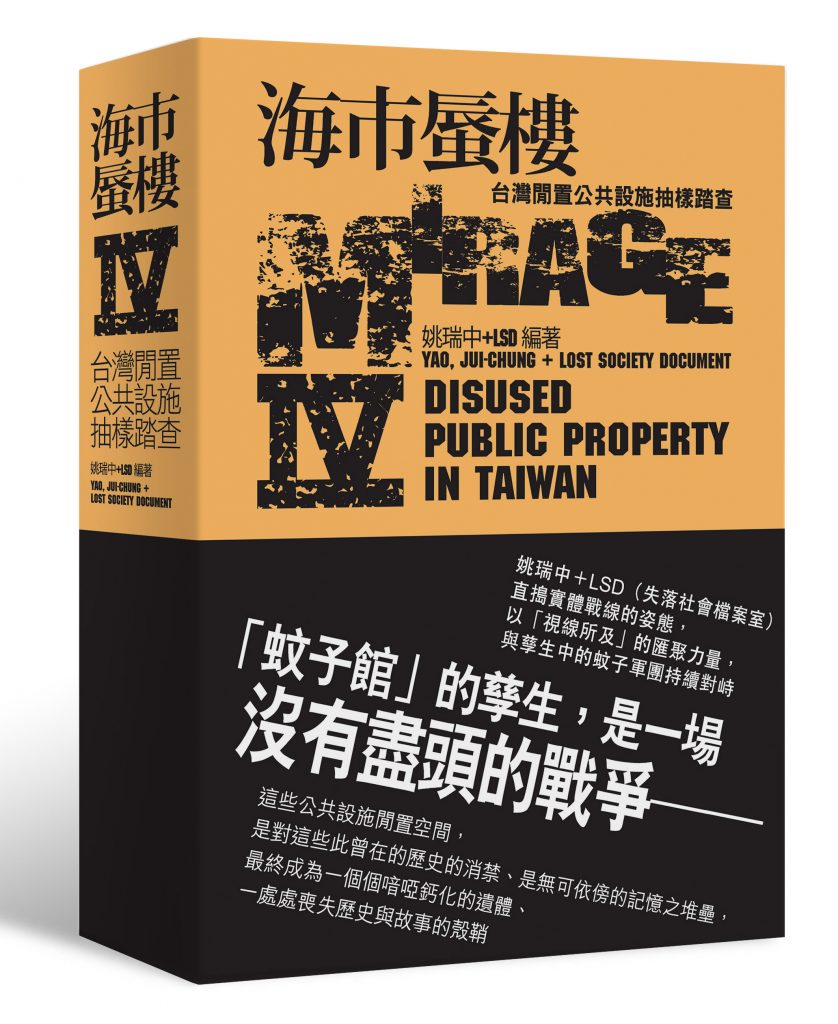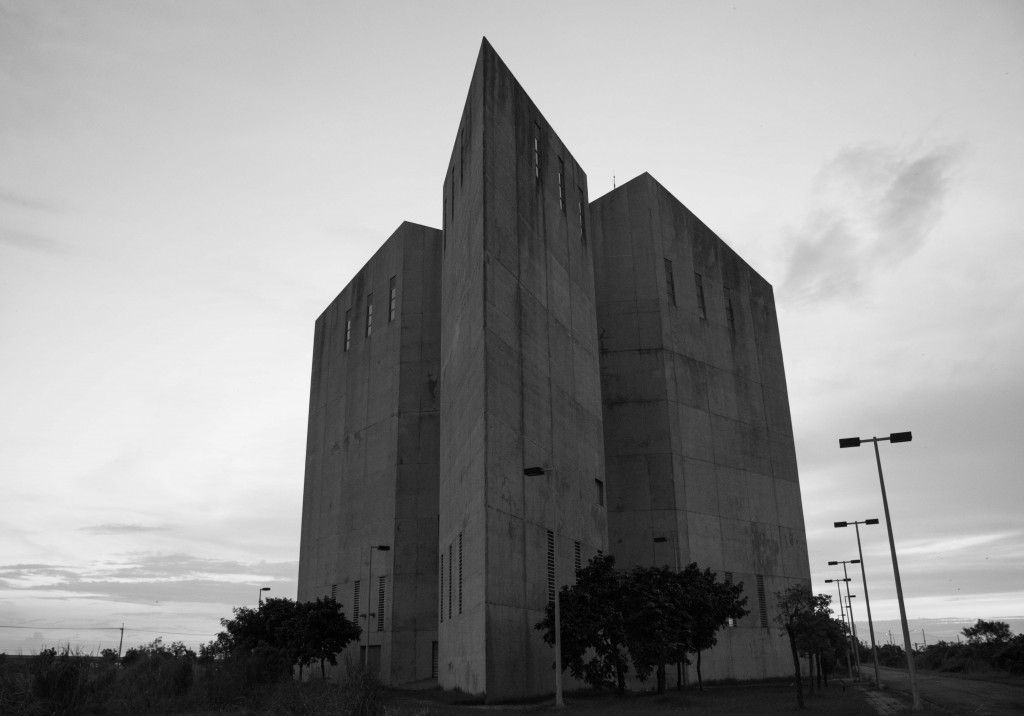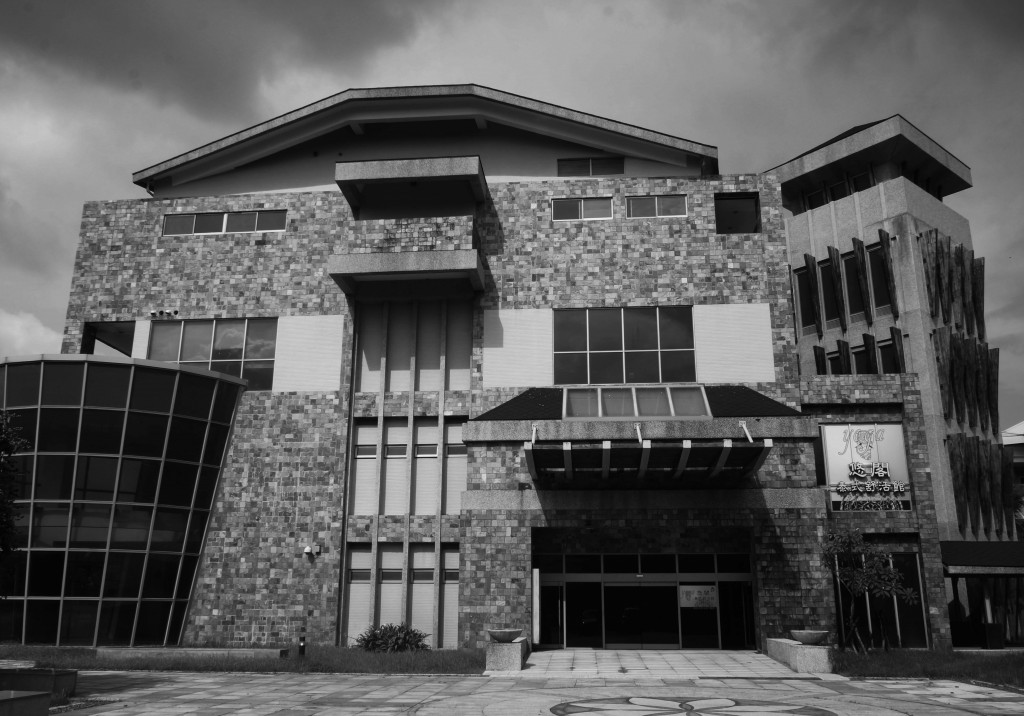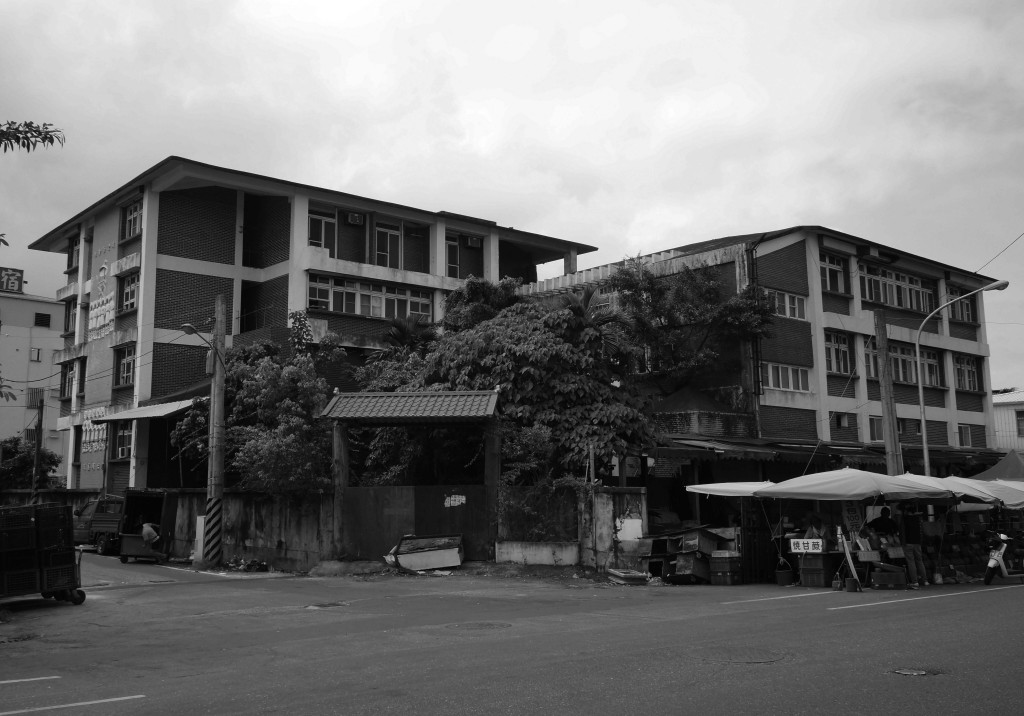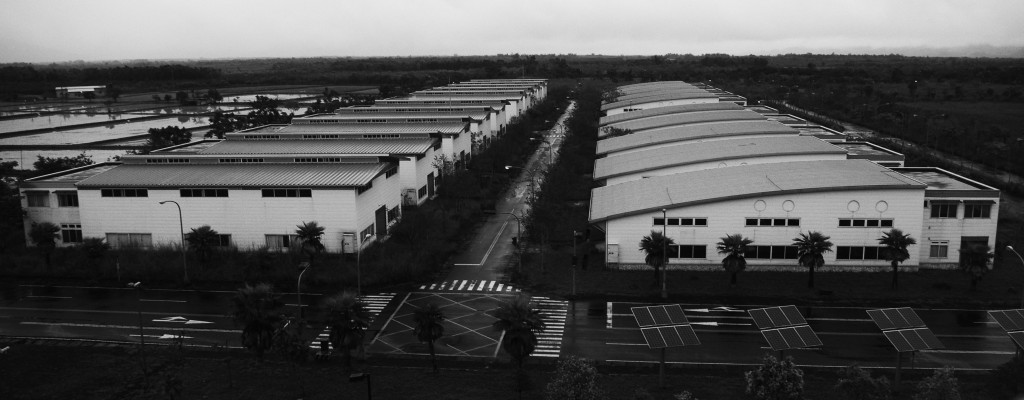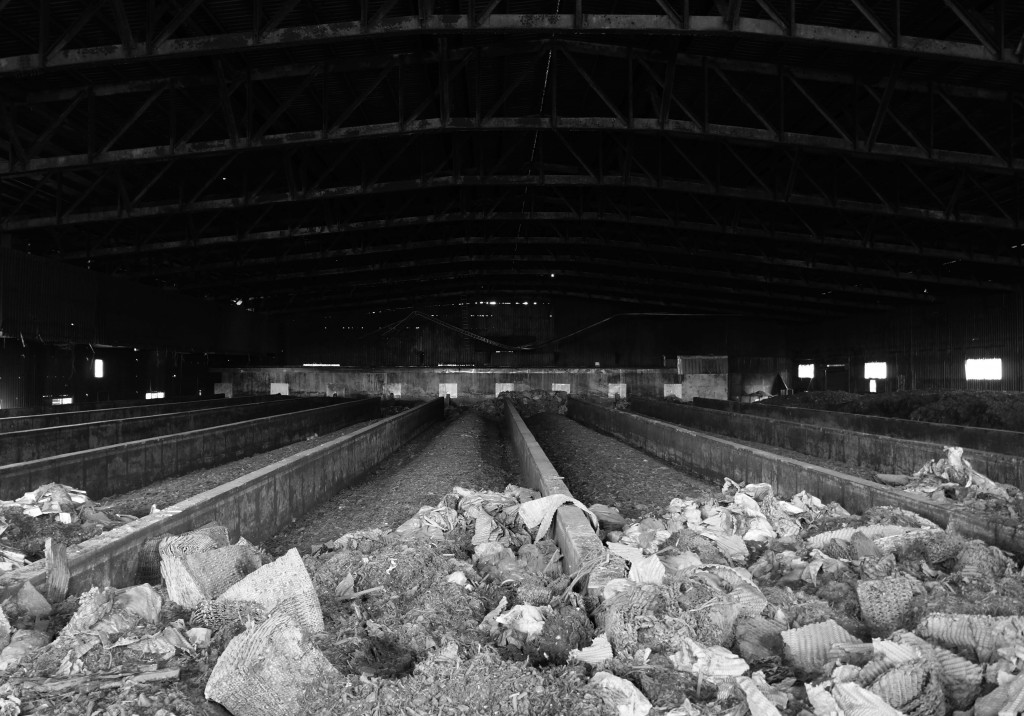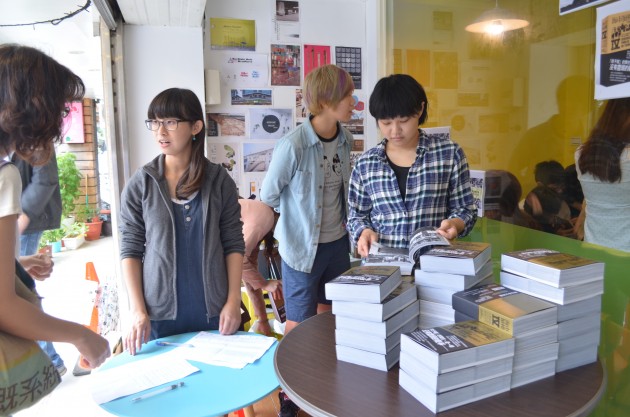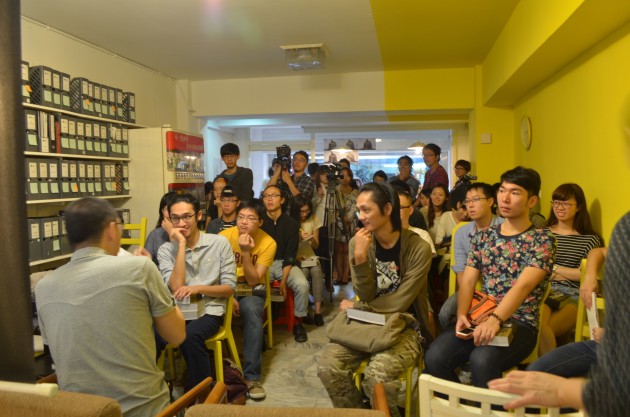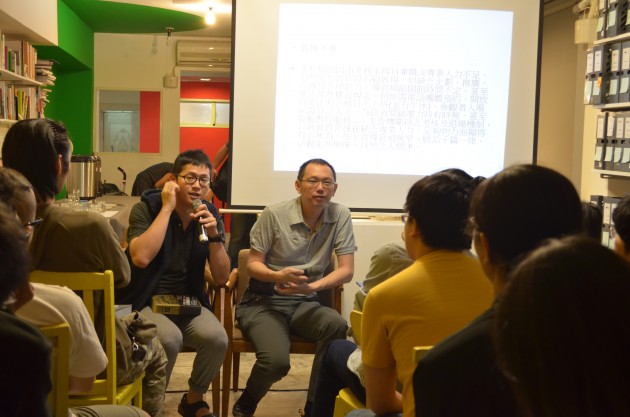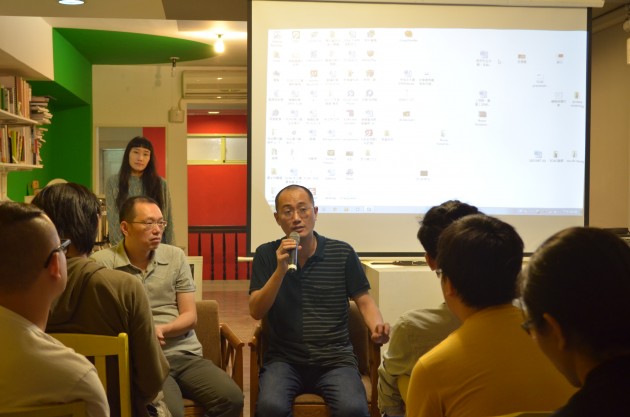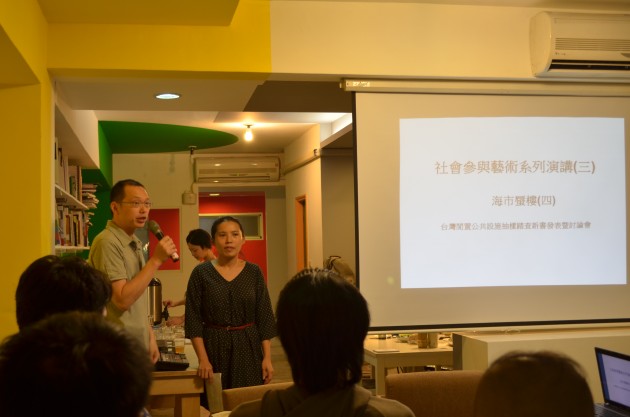2014.10.11 SAT 2-4PM
「海市蜃樓(四)—台灣閒置公共設施抽樣踏查」新書發表暨討論會
Book Launch “Mirage IV: Disused Public Property In Taiwan”
主講:姚瑞中|策劃主持:呂佩怡
Speaker: YAO Juichung|Moderator: LU Pei-Yi
**蚊子館全新APP同步發表
***出席者將可獲贈價值600元的新書一本
For English please scroll down.
「海市蜃樓(四)—台灣閒置公共設施抽樣踏查」新書發表暨討論會
2010年三月開始帶領學生執行「海市蜃樓」拍攝與書寫計劃時,並沒有想到台灣公有閒置設施數量之多。因為尚未算入土地成本與通貨膨漲等因素,投入經費可能遠高於政府所承認的數百億元。有關單位更礙於行政效率牛步及缺乏成功經驗傳承,雖然召開多次檢討會議,實際成效卻不如預期。
就本書編入的一百件案例分析,閒置因素錯綜複雜、互相牽動,初步歸納如下:時空變遷導致原始規劃用途消失、政策制定與民意脫節、競選支票、綁樁文化、圍標及綁標、業務貪瀆與工程弊案、施工品質不良、行政程序未臻完備、機關搬入新建物導致原建物閒置、老舊建築、歷史建物或古蹟缺乏經費維修、資本門重於經常門、文化保護主義淪於文化工業樣板、閒置空間活化後再閒置⋯等。
時至今日,台灣在M型化結構之下,房價高漲、稅制不公、教改失敗,公民被剝削感加重,人民對政府的信任感降低,年青人出路狹窄,「蚊子館」不斷形成,造成了政府財政上的長期負擔。
如何有效防止並降低「蚊子館」的生成,政府應嚴格從上游管控公共工程政策,預防「孓孒館」滋生。同時清查閒置的公共設施,配合民間媒體或個人舉報系統,掌握清單並造冊備查,以靈活具彈性的活化策略,從社會福利為發展基礎,釋出閒置空間給真正需要的人們。(節錄自本書編者序)
姚瑞中
1969年生於台灣台北,1994年台北藝術大學美術系畢業。曾受邀參加威尼斯雙年展、橫濱三年展、布里斯班亞太三年展、上海雙年展、首爾媒體城市雙年展、曼徹斯特亞洲藝術三年展、深圳雕塑雙年展…,2013年獲首屆集群藝術獎,2014年入圍亞太藝術獎。著有《台灣裝置藝術》、《台灣當代攝影新潮流》、《台灣廢墟迷走》、《台灣行為藝術檔案》、《流浪在前衛的國度》、《廢島》、《姚瑞中》、《人外人》、《幽暗微光》、《逛前衛》(合著)、《恨纏綿》、《萬歲山水》、《萬萬歲》、《小幻影》、《海市蜃樓Ⅰ&Ⅱ&Ⅲ&Ⅳ》(編著)等書。
社會參與藝術系列演講
社會參與藝術系列強調人的主體性與能動性,認為人類的作為一方面帶來進步的生活,但另一方面也造成環境社會的浩劫,這些惡果必須由人來解決。社會參與藝術 (socially engaged art, participatory art或 social practice)以藝術為施力點,透過人與人之間的合作、參與、聯結、關係建立,讓議題被感知,興起一股「讓我們一起做些甚麼」的想法。此系列將透過幾種不同形式來檢視藝術與社會的關係:【學者專題演講】提供不同地域在社會參與藝術經驗與困境,包括日本、中國、法國等,【藝術家對談】讓藝術家分享其跨地域的社會參與創作經驗,以及【圓桌論壇】、【新書發表】等。
呂佩怡/策劃主持
策展人,研究者,藝評人。倫敦大學人文與文化研究博士,研究興趣為off-site art(美術館外的藝術實踐),美術館議題,以及策展研究:透過展覽研究與書寫嘗試建構理論與相關歷史,同時也通過策展實踐去檢視概念,推動理論與實踐並重的當代策展,近期將出版《台灣當代藝術策展二十年:一個實驗性的書寫》。擔任2014年深圳雕塑雙年展「我們未曾參與」副策展人。曾授課於國立台北藝術大學博物館研究所、美術學院、香港中文大學文化管理碩士課程以及台北教育大學藝術與設計系。
側寫/張瑜庭
在國慶連假的星期六下午,小小的台北當代藝術中心被人群湧入,來參與藝術家姚瑞中的新書發表會。海市蜃樓計畫在今年出版第四集,裡頭記錄一百處遍佈全台的蚊子館,然而蚊子館的問題從第一集到現在,依舊層出不窮,其形成原因涉及面向多而繁雜,而後續活化問題更有待加強。
姚瑞中先簡單介紹整個海市蜃樓計畫,當中參與協助完成的LSD(失落社會檔案室)是由師大美術與台藝大等學校學生所組成,學生們藉由修習姚瑞中的課程,回到自己的故鄉,深入去了解當地的蚊子館、再實地去探勘、盡心盡力地用自己的相機與文字記錄下來;另外有幾位參與者是沒有學分的旁聽生,仍和其他同學一樣熱心的參與計畫的執行。
接著,姚瑞中分析蚊子館問題的原因與各個面向:首先是因時空的變遷,使建築原規劃的用途消失,或是機關撤出導致原建築廢棄;其中以國防部所有地最多,而教育部的則是因少子化導致學校合併而產生多處蚊子館。再者是,政策制定與民意脫節、規劃不周:當初建蓋為了迎合需求或另有其他目的。其他因素像是競選支票與綁樁文化、團標語綁標等,背後牽連的因素更是多如牛毛;舉例來說:業務貪瀆或是相關政府官員因司法案件纏身,而使工程被收押、不能持續動工等不勝枚舉。另外,從以上面向來看,多少都包含施工品質不良或是行政程序不完整,使得有些工程延宕而變成蚊子館。在整個討論中,姚瑞中不時在中間還請幾位同學到台前分享拍攝蚊子館的經驗,師生間幽默互動。
公民監督是民主的基礎,而與前三本書不同之處是,隨著這次新書發表,蚊子館地圖的APP也同時發布,目前海市蜃樓計畫的成果以軟體APP、網站呈現,向社會大眾免費公開所有蚊子館資訊,裡頭還附有蚊子館的介紹以及討論的功能,讓大家可分享到FB等社團網站上,進一步幫蚊子館找出活化方式來利用。主持人在活動尾端說到,現在蚊子館的問題持續發酵,在民主制度下,社會參與是公民責任,行動能改變事情;姚瑞中帶學生離開課堂來執行社會參與藝術的活動,同時面對真實社會的一面。
延伸閱讀:海市蜃樓(四)編者序
(Chinese version only)
Book Launch “Mirage IV: Disused Public Property In Taiwan”
When we launch the photography and writing project of ‘Mirage’ with students from March, 2010, the large number of disused public property in Taiwan was not expected. It could be suggested that these public property cost much more than the amount of money – over ten billions – that recognized by the government, as the land cost and inflation was not included. Moreover, due to the inefficiency in related executive departments and the lack of passing down successful experiences, although several meetings were hold with the relevant authority, the outcome is disappointing.
The crucial issues of idle public facilities are complicated and interrelated. Referring to these one hundred cases listed in the book, we could briefly sort out the factors and causes as below: the originally assigned use waning in time, facilities constructed for elections and political reasons which are not in line with public wills, corruption issues including bidding collusion, bid rigging, official malfeasance and construction fraud, low construction quality, incapable administrative procedures, disused space resulting from sectors relocation to new buildings, insufficient fund for maintenance of heritage and historical buildings, more concerns placed on capital expenditure than current expenditure, a shift from cultural protectionism to a template of culture industry, invalid plans of space reuse, etc.
In the emergence of the M-shape society in Taiwan, a sense of being exploited within the public has risen greatly, resulting from the soaring house prices, the unfairness of tax system, the failure of education reform, and the low youth employment rate, which also has lowered the public trust in the government. These ongoing construction of mosquito-breeding sites become a long-term finical burden to the government.
To thoroughly decrease and prevent the mosquito-breeding sites, the government should strictly supervise the public construction policy in order to avoid raising mosquito larvae sites in advance. Meanwhile, examining the number of unused public facilities with the help of citizen media and report system, the government can obtain a detail list in hand for further use and allow reuse policymaking to be of flexibility. Therefore, based on social welfare, more idle spaces can be released and returned to the people in need. (Excerpt from the artist’s preface)
YAO Jui-Chung
YAO Jui-Chung was born in 1969 in Taipei. Graduated from The Taipei National University of the Arts. he represented Taiwan at the Venice Biennale and took part in the International Triennale of Contemporary Art Yokohama, APT6, Shanghai biennial, Shenzhen Sculpture Biennale, Venice Architecture Biennale, Media City Seoul Biennale and Asia Triennial Manchester. Win The Multitude Art Prize on 2013 and 2014 ABF Art Prize. The themes of his works are varied, but most importantly they examine the absurdity of the human condition. also published “Installation Art in Taiwan” ,” The New Wave of Contemporary Taiwan Photography”, ”Roam The Ruins of Taiwan” , “Performance Art in Taiwan”, ”Ruined Islands”, ”Yao Jui-chung”, ”Beyond Humanity”, “Nebulous light”, “Biennial-Hop”, “Mirage Ⅰ&Ⅱ&Ⅲ&Ⅳ”, “Some thing blue”.
Socially Engaged Art Talks
The series of Socially Engaged Art Talks emphasizes on the subjective and initiative of human being. It suggests that as human being making progress in daily life it also causes inevitably crisis to endanger the environment and our society. These consequences must be resolved by the people. The practice of socially engaged art, participatory art or social practice takes art as a starting point. Through collaboration, participation, connection, relationship building, social issues can be perceived and the idea of “let’s do something together” is emerged.
This series will examine the relationship between art and society through several different forms: Scholars provides lectures and the issues relating to socially engaged art practice and dilemma in different regions, such as Japan, China, France and so on; artists conduct conversation sharing their cross-regional experiences in socially engaged art. Also, a roundtable discussion and a book launch will be held.
Dr. LU Pei-Yi/ Moderator
A researcher, art critic and curator. She awarded PhD in humanity and Cultural Studies from University of London. Her research interests are off-site art, museum studies and curating in theory and practice. Recently, a research-based book Contemporary Art Curating in Taiwan Two Decades is going to be published. She is an associate curator of 8th Shenzhen Sculpture Biennale “We Have Not Participated” (2014). She had been as an assistant professor of Museum Studies MA, National Taipei University of the Arts and served as a visiting assistant professor in Cultural Management MA, Chinese University of Hong Kong. She is teaching part-time in Fine art school, National Taipei University of the Arts and National Taipei University of Education.

